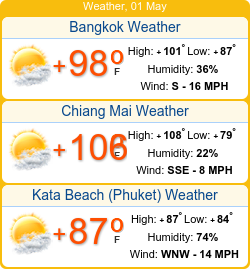
What's Happening at Wat Tampa
Search
Wat Tampa Visitors
Buddhism FAQ
Why do monks go on alms rounds in the morning?
In order to appreciate this act, one needs to have a background understanding of Buddhist society, Buddhist society consists of four groups of people: monks, nuns, laymen and laywomen. Monks and nuns have left household life and have gone forth to spend time fully in the study and practice of Buddhist teaching. Once they are well fortified with study and practice, they are expected to teach the lay people and provide them with spiritual comfort and guidance.
Lay people, on the other hand, are householders who are still engaged in worldly activities. It is expected that able Buddhists should support the ordained ones by providing them with material requisites such as clothing, food and medicine. Buddhist societies are expected to work out with this compromise division of responsibilities.
When the monks go for alms round, from the monk’s point of view, they are to make available the opportunity for the lay people to make offering to the ordained ones who are the “field of merit”, worthy of offering. Also by taking care of the material needs of the ordained ones is a way to reinsure the stability of Buddhism and its institute on the one hand and also to uplift the lay peoples’ own practice on the other.
Why do monks wear patched robes?
Buddhist monks are homeless and do not have any valuable personal belongings. Originally they had to collect discarded pieces of cloth wherever they could be found, and wash and sew them together. Then the robe was dipped in natural dye from bark or the pith of a tree. The robes were mostly brownish in color. The different shades of the color did not signify the strictness of the wearers at the time of the Buddha, nor do they today.
Venerable Ananda, the Buddha’s cousin and personal attendant, designed the robe at the request of the Buddha. The pattern of the robe was taken from the pattern of the paddy fields in the Magadha Kingdom. It was accepted by the Buddha and had become standardized since then.
In Thailand, usually the darker robed monks tend to be forest monks. However, there are some monks living in the city who also prefer wearing darker brown robes.
The reason why the Buddha accepted a patched robe was to distinguish monks’ robes from lay people’s clothing and to discourage thieves.
Is it justified for a Buddhist to believe he could be a real Buddhist only through meditation, and to discard all concerns about serving society?
To be a real Buddhist is just to take the Triple Gem as one’s guide, that is to say, if anyone puts his or her faith in the Buddha, Dhamma and Sangha, he or she is regarded as a Buddhist. This is according to the answer of the Buddha to Prince Mahanama’s question about being a Buddhist.
There is an advice for progress in practice called the Basis of Merit Making as taught by the Buddha as follows:
1. Charity or generosity (Dana),
2. Morality (Sila), and
3. Development of Meditation which is of two kinds, namely: tranquillity of the mind and spiritual insight. (Bhavana)
From the above mentioned principle it is clear that charity and serving society in the way of giving a helping hand and other spiritual practices are regarded as the additional (practices) of being a Buddhist.
Is there any Buddhist teachings that monks should have a role of serving society in addition to teaching Dhamma?
The history of Buddhism tells us that when the Buddha convened his first group of 60 disciples before sending them on the missionary work, He instructed them to go separately on a journey for the gain of the many, for happiness of the many, and for helping the world. This shows that the Buddha advised his disciples to serve society. The serving should be done appropriately to the status of the monk. To put the teaching into practice, to make oneself an example, and to teach the people are the main functions of Buddhist monks. Usually monasteries are the centres of communities and social welfare. In case of various disasters, monks will extend their helping hands to the people as much as possible. To serve society in the way of charity or other social work is also allowed for monks, providing it does not contradict the monastic rule.
